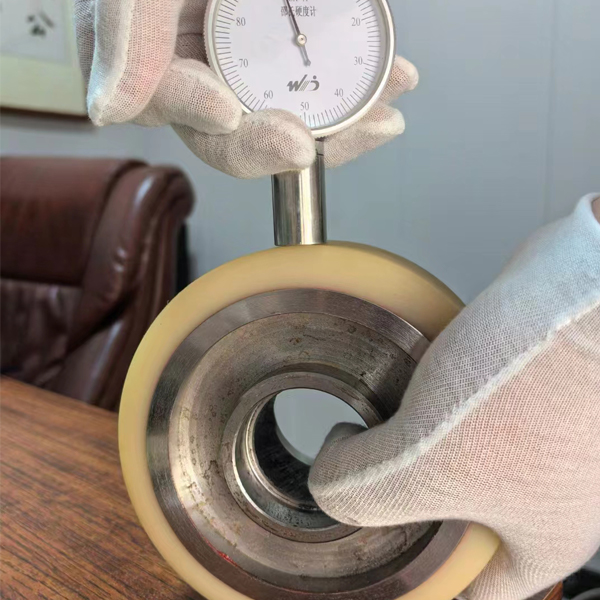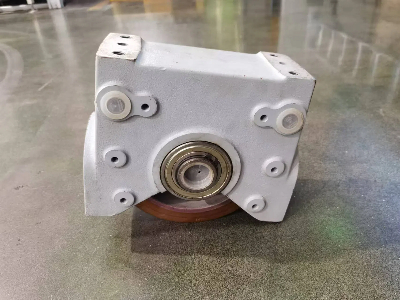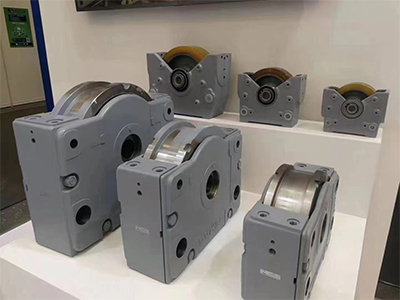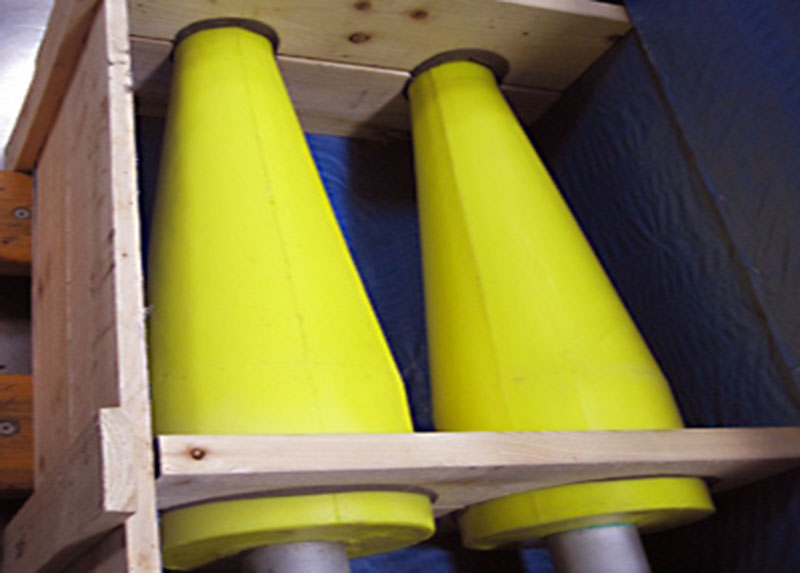High-Load Solid Polyurethane Wheels
Solid polyurethane wheels are widely used in many fields, such as industry, logistics, and manufacturing, due to their excellent load-bearing capacity, wear resistance, and environmental adaptability. This article will introduce their main advantages, key technologies in the casting molding process, and typical application scenarios in detail.
Advantages of high-load solid polyurethane wheels
• Strong load-bearing capacity
Solid polyurethane wheels combine the firmness of the steel core with the excellent performance of polyurethane materials. In addition, by increasing the thickness or width of the wheel, they can withstand the load of heavy equipment and vehicles, meeting the high load requirements in industrial production and logistics transportation.
• Excellent wear resistance
Polyurethane materials have excellent wear resistance due to their unique properties, are not easy to tear or debond, significantly reduce the replacement frequency caused by wear, and increase service life.
• Excellent impact resistance and shock absorption performance
Polyurethane materials have good elasticity and vibration absorption capabilities, can effectively absorb shock and vibration, protect equipment and goods from damage, and reduce operating noise.
• Strong environmental resistance
Polyurethane materials have a certain inertness, good resistance to oil, water, chemicals, etc., are not susceptible to corrosion, and are suitable for complex working environments.
• Wide temperature adaptability
Polyurethane wheels can be used in a temperature range of -40℃ to 80℃, adapting to different climates and environmental conditions. Specially customized wheels can also accept high or low temperatures beyond the range.

Casting molding process of solid poly wheels
The manufacturing process of solid polyurethane wheels mainly includes the following steps:
• Mold preparation
Select an appropriate mold, clean and preheat it to ensure that the polyurethane material can evenly fill the mold.
• Material mixing
Mix the polyurethane prepolymer and curing agent in proportion, add necessary additives such as catalysts, fillers, etc., to ensure uniform mixing.
• Casting molding
Pour the mixed polyurethane material into the mold to prevent bubbles from forming. If necessary, vacuum degassing can be performed.
• Curing and demoulding
Cure at an appropriate temperature and time, and remove the finished product from the mold after the polyurethane material is completely cured.
• Post-processing
To ensure that the finished product meets the requirements of use, necessary post-processing, such as trimming, grinding, quality inspection, etc., must be performed on it.

Application fields of solid urethane wheels
• Logistics and storage equipment
Forklift wheels: withstand frequent heavy-load movement to avoid indentation damage to the storage floor.
AGV guide wheels: provide precise steering and stable support to meet the needs of automated logistics systems.
• Heavy machinery and special vehicles
Port crane track wheels: resist seawater corrosion and high impact loads.
Mining equipment wheel set: achieve anti-cutting and long-cycle operation on gravel roads.
• Special environmental scenarios
Food and pharmaceutical industry: FDA-certified polyurethane wheels meet hygiene standards and resist grease penetration.
Low-temperature cold storage: maintain elasticity to avoid the risk of fracture caused by low-temperature embrittlement.
• Precision instruments and equipment
Precision laboratory bench mobile wheels, transport vehicle load-bearing wheels, and other scenarios require non-magnetic, anti-static, or explosion-proof properties.
High-load solid polyurethane wheels have the advantages of wear resistance, tear resistance, high load, not easy to debond, high and low temperature resistance, etc. They are widely used in logistics, warehousing, heavy machinery, clean rooms, and other fields. Choose Filson to provide you with high-quality, low-maintenance, and economical transportation solutions.




